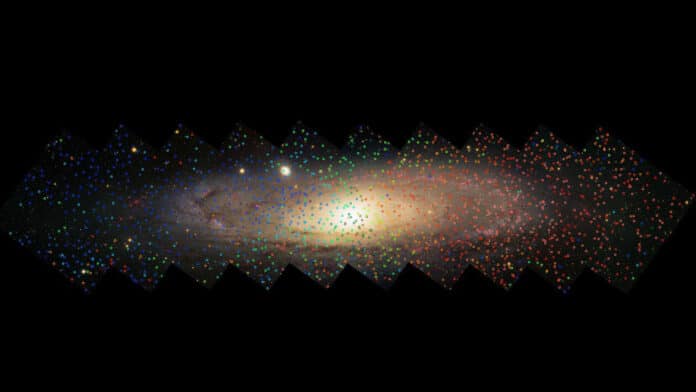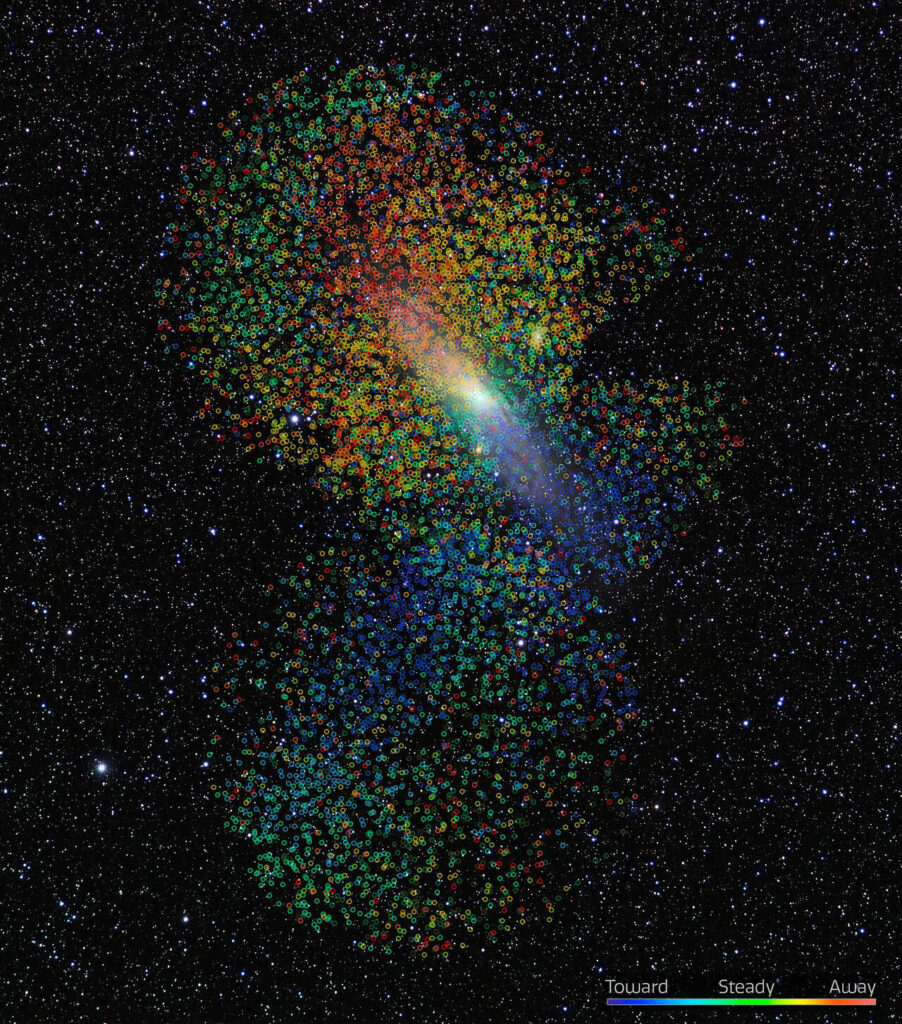Astronomers have discovered evidence of galactic migration within the Andromeda galaxy.
Striking new evidence of a large galactic immigration event in the Andromeda Galaxy.
Over billions of years, galaxies go through a process of expansion and development known as “galactic immigration,” which involves the creation of new stars and mergers with other galaxies. To better understand the histories of these immigration events, scientists study the movements of individual stars within a galaxy, as well as the wider halo of stars and dark matter. However, this kind of cosmic archaeology has previously only been possible in our own Milky Way galaxy.

Recently, an international team of researchers has discovered compelling new evidence of a significant galactic immigration event in the Andromeda Galaxy. By analyzing the complex patterns of star motions, they have found indications of a migratory history similar to that of the Milky Way. The team used the Dark Energy Spectroscopic Instrument, which is operated by the DOE and designed by Nicholas U., to make these new discoveries.
Using data from the Dark Energy Spectroscopic Instrument, a team of astronomers has analyzed the motions of nearly 7500 stars in the inner halo of the Andromeda Galaxy, also known as Messier 31 (M31). Through their observations, they have identified patterns in the positions and movements of these stars that suggest they originated from an earlier galaxy that merged with M31 approximately 2 billion years ago. While these patterns have been predicted by theory, this is the first time they have been observed so clearly in a galaxy.
These new observations provide detailed evidence of a galactic immigration event. Throughout cosmic history, smaller galaxies like M31 and our Milky Way have served as the building blocks for larger galaxies.
Sergey Koposov, an astrophysicist at the University of Edinburgh and coauthor of the paper, said, “We have never before seen this so clearly in the motions of stars, nor had we seen some of the structures that result from this merger. Our emerging picture is that the history of the Andromeda Galaxy is similar to that of our Galaxy, the Milky Way. The inner halos of both galaxies are dominated by a single immigration event.”

Using the powerful Dark Energy Spectroscopic Instrument (DESI), the team of astronomers has investigated the history of migration in M31, which is the most potent multi-object survey spectrograph in the world. With the capability to measure the spectra of over 100,000 galaxies a night, DESI offers valuable insight into the past of our galaxy and our galactic neighbors. By examining the remnants of a recent galaxy merger seen in M31, astronomers can gain insights into one of the crucial events in the Milky Way’s history, which occurred during a galactic merger 8-10 billion years ago when most of the stars in the Milky Way’s halo were created in another galaxy and eventually moved into our own.
According to Arjun Dey, the lead author of the paper presenting this research and an astronomer at NSF’s NOIRLab, “This science could not have been done at any other facility in the world. DESI’s amazing efficiency, throughput, and field of view make it the best system in the world to survey the stars in the Andromeda Galaxy. In only a few hours of observing time, DESI was able to surpass more than a decade of spectroscopy with much larger telescopes.”
The research was carried out in collaboration with two Harvard University undergraduates, Gabriel Maxemin and Joshua Josephy-Zack, who were connected with the project through the Radcliffe Institute for Advanced Study. Additionally, Najita was a Radcliffe Fellow from 2021 to 2022.
Journal Reference:
Dey, A. et al., (2023) “DESI Observations of the Andromeda Galaxy: Revealing the Immigration History of our Nearest Neighbor” to appear in The Astrophysical Journal. DOI: 10.48550/arXiv.2208.11683
Do not forget to share your opinion with us to provide you with the best posts !



0 Comments